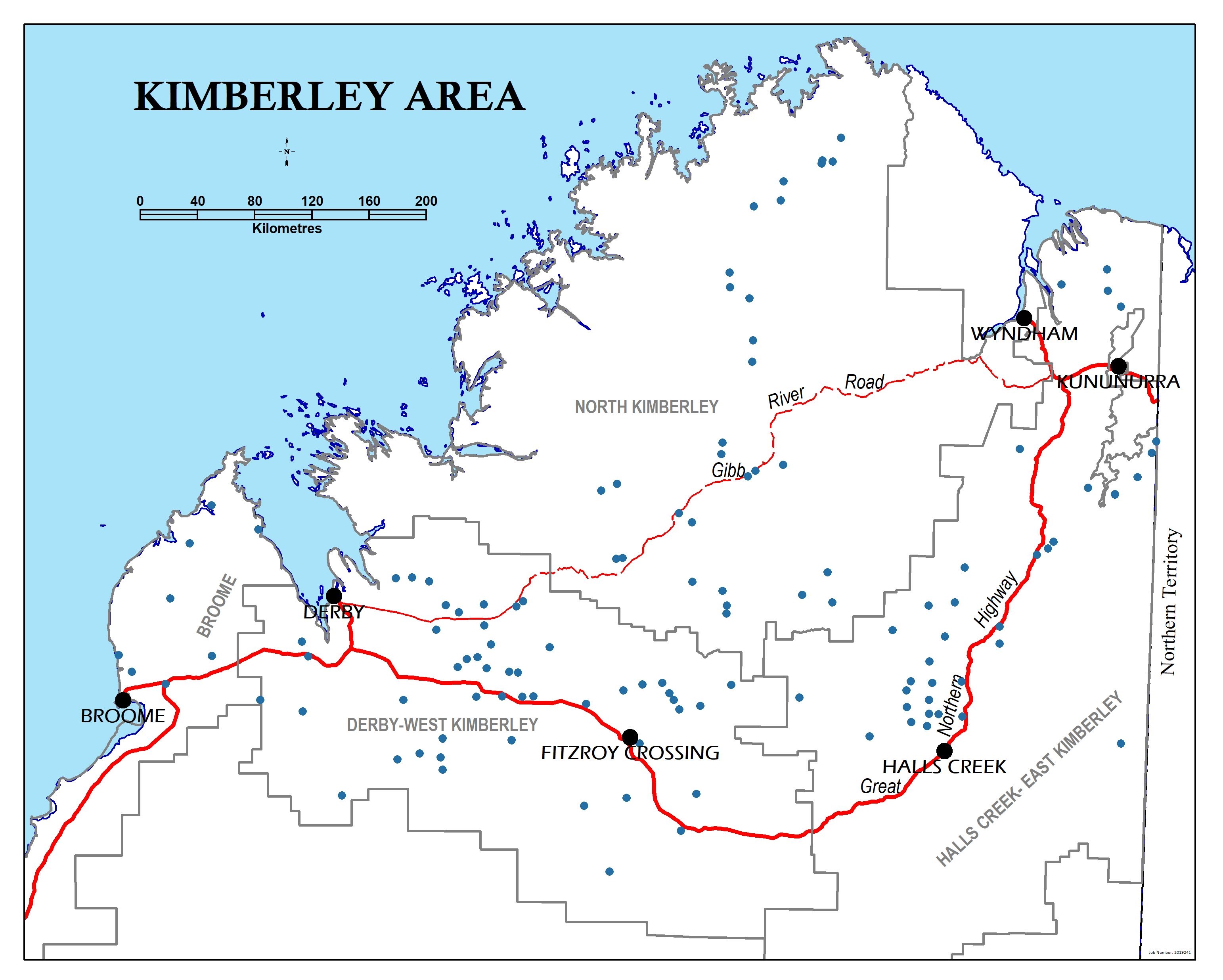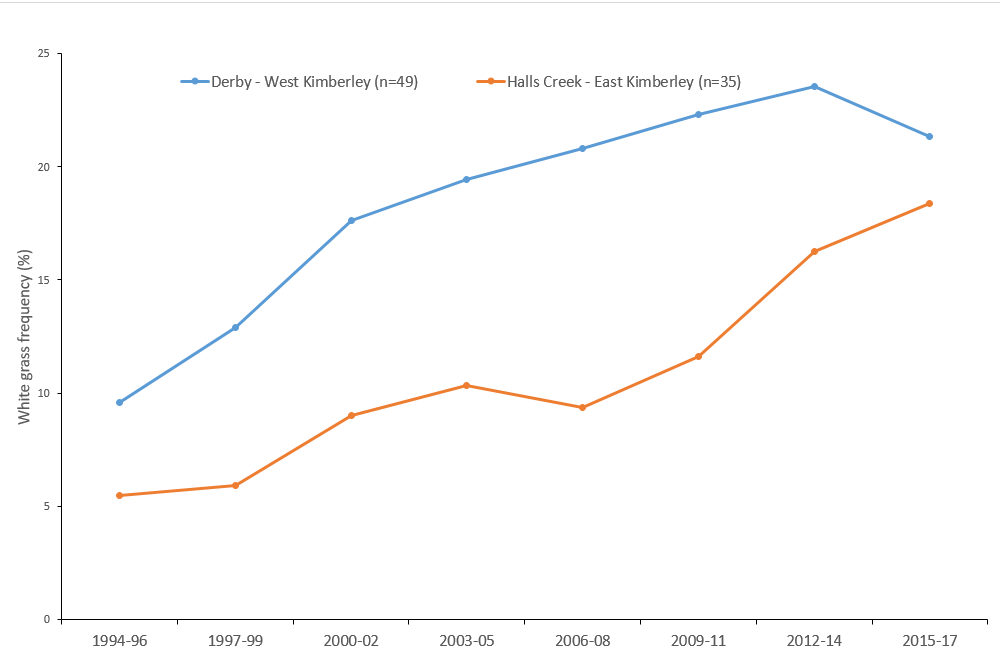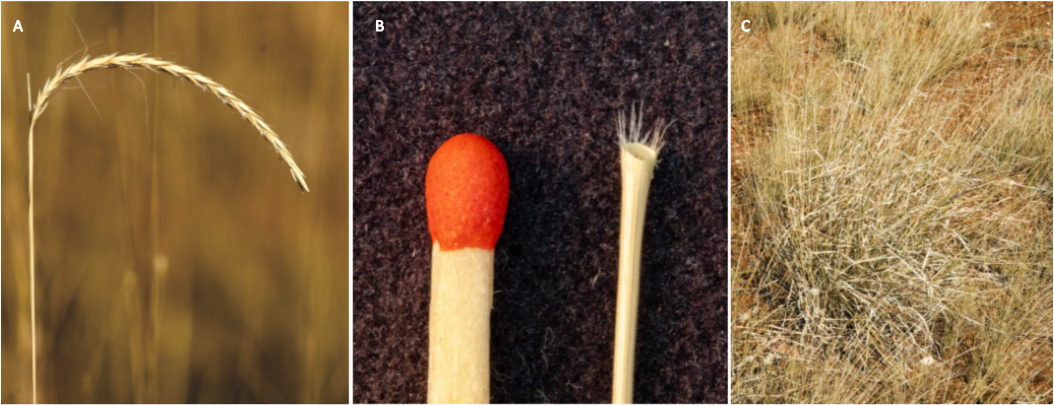White grass – Increase of observed frequency in relation to other key 3P species
The May 2019 Rangelands Memo featured an article (pp. 23-25) titled ‘White grass’, which discussed the key characteristics of this native perennial species and evidence from the Western Australian Rangeland Monitoring System (WARMS) of a general increase in the frequency since monitoring began in 1994.

In this article, we look at changes in the frequency of several other grasses important over the same period. The species considered are:
- feathertop threeawn (Aristida inaequiglumis)
- limestone grass (Enneapogon polyphyllus)
- black speargrass (Heteropogon contortus)
- ribbon grass (Chrysopogon fallax)
- bundle-bundle also known as curly bluegrass (Dichanthium fecundum).
The information that follows is based on a poster presented at the Australian Rangelands Society conference held in Canberra in September 2019.
The observations
The WARMS data reported was derived from sites in the Derby–West Kimberley and Halls Creek–East Kimberley districts as almost all sites where white grass frequency had shown a clearly increasing overall trend since monitoring began, were from these two areas. Two subsets of sites were selected for comparison purposes:
- sites showing an increasing trend (at least 15%) in white grass frequency
- sites where white grass frequency remained relatively stable (trend within ±5%)
Frequency changes of the ‘other’ grasses present at sites belonging to these subsets were then compared.
Results
Average white grass frequencies for the complete set of study sites in the Derby–West Kimberley and Halls Creek–East Kimberley districts showed generally similar patterns of change (Figure 2).

Feathertop threeawn and limestone grass frequencies generally decreased, regardless of whether white grass frequency increased or was stable. However for both feathertop threeawn and limestone grass, the average decrease was greater at sites where white grass frequency increased. Black speargrass and ribbon grass frequencies generally increased regardless of whether white grass frequency increased or was stable. Changes in bundle-bundle frequency were not significant.
Discussion
Weather or land use causing increased white grass frequency?
The long-term increase in average frequency of white grass at monitoring sites in the Derby–West Kimberley and Halls Creek–East Kimberley districts has yet to be explained and warrants further investigation. Together, these districts support the majority of Kimberley cattle production. For the region as a whole, reported stock numbers (cattle units) increased steadily from about 387,000 (avg. 1994/95/96) to 727,000 (avg. 2015/16/17).
The Kimberley region experienced a very favourable run of wet seasons during the study period. Although white grass is generally regarded as having limited value for pastoral production, it is a native perennial with good soil-stabilising properties. This exploratory study suggests that the observed increase in white grass frequency is unlikely to be associated with any major change in pastoral productivity.
White grass versus feathertop and bundle bundle
There was some evidence of an accompanying decrease in feathertop threeawn, a species considered undesirable from a pastoral perspective. An increase in white grass was associated with a decrease in the frequency of limestone grass, a palatable though short-lived species that is more abundant after good seasons.
No evidence was found of any influence of increasing white grass on the frequencies of ribbon grass and bundle-bundle, perennials that are highly valued for their contribution to production and soil stability. While the increase in white grass may not be of immediate concern, it is important that we continue to monitor the situation through the WARMS system and pasture assessments more generally.
Further information regarding white grass, including key identifying characteristics can be found here.
Acknowledgements
The authors would like to acknowledge the many land managers and Departmental colleagues who have contributed to the development and maintenance of the WARMS project.
Figure 3. A) White grass seed head. B) White grass is easily identified by the angled, concave scar left at the tip of the flowering stem when the seed head is detached. C) A perennial tussock of white grass in the dry season.
